Ice-pick scars
Often, after a severe acne breakout, acne scars follow. Among the types of acne scars that follow are acne ice pick scars. Most acne scars usually fade away on their own with age; however, ice-pick scars removal needs a lot of medical help to fade away.
Many opt to treat their acne scars using various therapies available. Popular options on how to get rid of acne scars include over-the-counter drugs and natural remedies, which are generally ineffective. The most effective option available is to consult a dermatologist who will prescribe or approve a skin regimen for the scars.
There are many ice-pick scars remedies to choose from in the market. In our latest post, we extensively discuss ice-pick scars.
What are ice-pick scars?
Ice-pick scars are deep, narrow, v-shaped scars that are usually less than 2 millimeters long. They are a result of severe cases of acne, for example, cysts and papules, which heal leaving behind the depressions. They resemble holes made by sharp objects, such as ice-pick scars, hence their name.
![]()
Ice-pick scars are arguably the worst acne scars as they are hard to treat. They also leave your skin appearing unsightly and uneven. This is the main reason why many people want to know how to remove ice-pick scars.
What causes ice-pick scars?
The underlying cause of ice-pick scars is severe acne, such as cysts. Cysts and papules occur deeper in the skin than other types of acne. They usually appear on the following places on the body,
- Face
- Neck
- Chest
- Back
- Shoulders
These are the most familiar places people notice them. The less common areas include,
- Underarms
- Hairline
The location of these cysts and papules mean that ice-pick scars can also occur in these areas; however, most people are concerned with the parts of the body that are visible.
How we treat active acne also affects how severe the ice-pick scars will be. Most people make numerous mistakes during the acne phase, which leads to severe scarring.
Common mistakes people make during active acne
In our previous post, we extensively discuss the common mistakes people with acne make. We will only list them here. They include,
- Delaying acne treatment
- Inducing inflammation
- Squeezing and popping pimples, cysts, and papules
- Failing to consult our doctors
It is these mistakes that lead to severe scarring. By avoiding them, we reduce our chances of getting acne scars.
Steps we can take to prevent scarringInstead of focusing on how to heal ice-pick scars, we can start by preventing them. Here are some few steps we can take to prevent acne scarring,
- Cleaning our skin gently using mild soaps and avoiding vigorous scrubbing.
- Continuing with the acne treatment regimen even after it clears.
- Using oil-free skincare products to prevent your oil glands from clogging up.
Basically, by taking care of our skin will greatly help prevent acne scarring. You can find our skincare tips here.
Treating ice-pick scars
Unlike other acne scars, ice-pick scar treatment is difficult. They need specialized treatment methods for people to notice any changes. Because of how deep they are, ice-pick scar treatment is in two stages. The first stage of treatment involves reducing the depth of the scar and bring it to the same level as the rest of the surrounding skin. In the second step, the treatments reduce the skin discoloration caused by the scars.
Stage 1: Reducing ice-pick scar depth
In this stage, there are several options available. They include,
Punch excision
The method involves removing the top layers of the skin covering ice-pick scars. Doctors use a punch tool that is the same size as the ice-pick scar to remove the overlying skin layers. After removing the skin layers, the resulting wound is closed up with stitches.
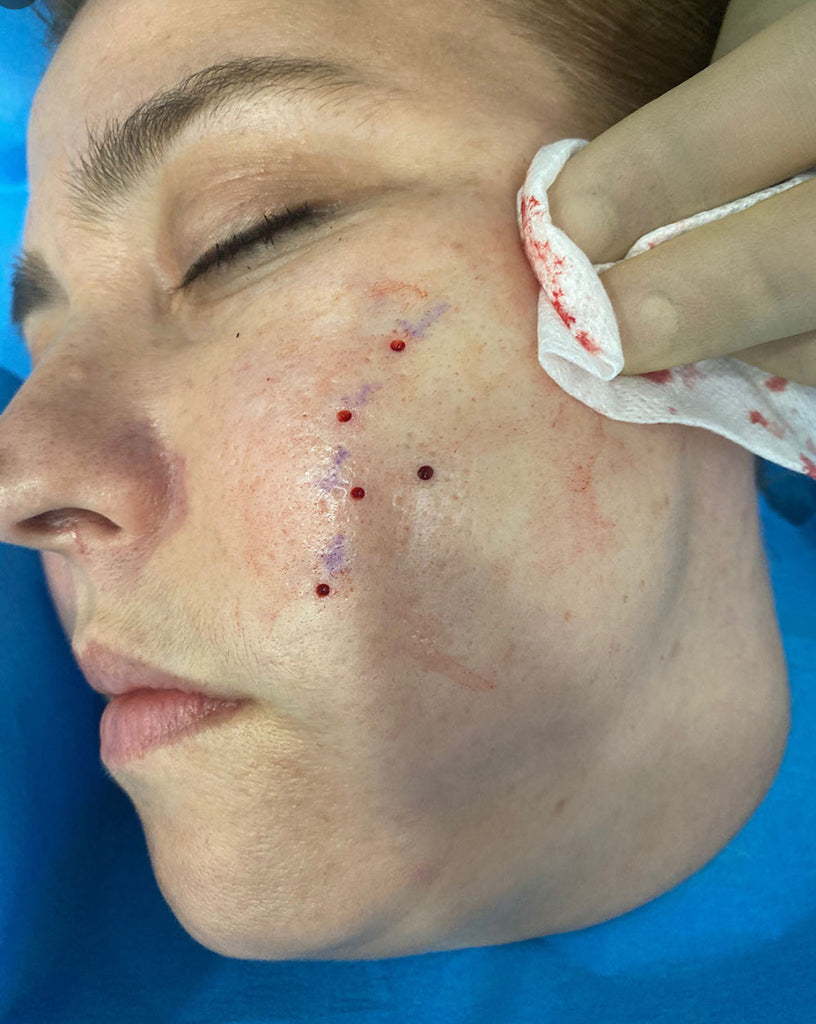
Before removing the overlying skin layers, the doctor applies a layer of local anesthetic to numb the skin making the procedure painless. After removing the skin layers, the resulting wound is closed up with stitches. Punch excisions usually leave a thin scar that is visible; however, it is not as bad as ice-pick scars.
Cost: Varies widely depending on the number of scars for removal. It will likely cost upwards of $250 for every session.
Punch elevation
Punch elevation is similar in procedure to punch excision. The difference between these two methods is that punch elevation strictly uses the punch tool to remove the skin overlying ice-pick scars.
Punch grafting
Doctors apply punch grafting to treat ice-pick scars that are extremely deep. The procedure involves removing the skin from the ice-pick scar and replacing it with graft skin. Graft skin is skin from a different part of the body. Usually, doctors get the skin from places that will match the complexion of your face. Popular grafting areas for acne scars include skin from behind the ear.
Dermabrasion
Dermabrasion is a type of minor surgery that involves removing the top layer of the skin, usually on the face. It uses a rotating instrument to achieve this. Dermabrasion is also possible in other parts of the body, such as the hand. Like punch excision, the doctor will numb the skin before dermabrasion.
The method removes the damaged layer of skin covering ice-pick scars. It then exposes skin that appears to be younger and smoother. The previously uneven skin from ice-pick scars evens out after the procedure.
Cost: The average cost for dermabrasion as at 2018 was $1249.
Dermal fillers
Dermal fillers are injectable fillers. They include Juvéderm and Botox. The dermal fillers work by lifting the base of the ice-pick scar so that it is closer to the surface of the skin.
Doctors inject the base of the ice-pick scars with fillers, which causes the base to rise. The treatments lasts for about six months before its effects start wearing out. Maintaining the outward results will require a repeat of the treatment every six months.
Often, the treatment will not work on its own and will require other treatments to get the best results. Therefore, most doctors use dermal fillers as part of combination therapy.
Cost: Each session costs between $200 to $1100.
Chemical peels
Chemical peels lessen the appearance of ice-pick scars by removing the upper layer of the skin around the scar. The peels come in three forms,light peels, medium peels, and deep peels.
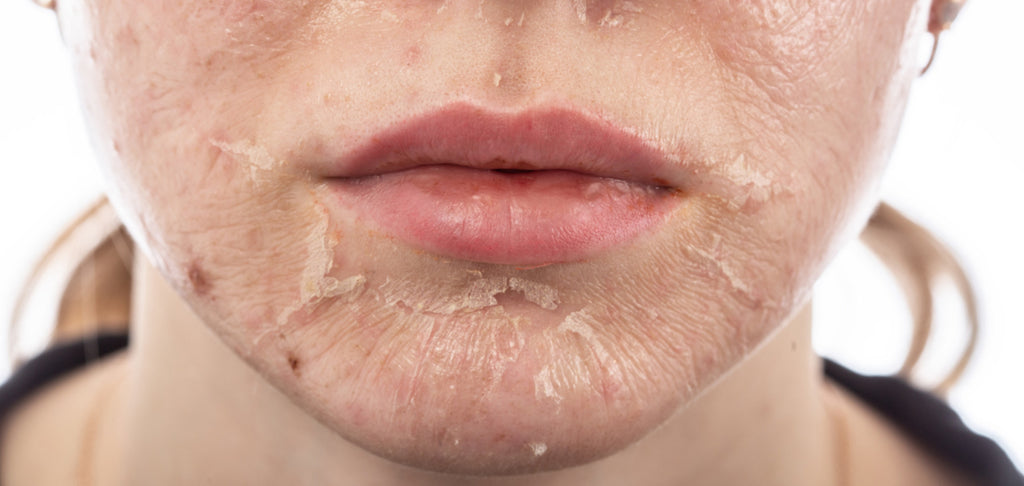
The active ingredient in medium peels is glycolic acid, while trichloroacetic acid (TCA) is active in deep peels. Medium peels usually produce superficial results, whereas deep peels result in more visible changes. The drawback of deep peels is the irritation it causes on the skin; however, the irritation does not last long.
If you opt to chemical peel ice pick scars, avoid the sun. Chemical peels increase the sensitivity of the skin to the sun.
Cost: Chemical peels cost between $150 and $3000. Lighter peels are the cheap options while deep peels can cost $3000 or even more.
TCA SCAR
TCA CROSS is an acronym for trichloroacetic acid (TCA) and chemical reconstruction of the skin (CROSS). It is a form of chemical peel. In this procedure, TCA is applied to chemically reconstruct the skin.
Physicians deposit small concentrated quantities of TCA (about 70%-100%) onto the surface of ice-pick scars. The concentrated TCA produces swelling in the area, which leads to the creation of new collagen fibers.
With TCA CROSS, the goal is to increase collagen to make it highly reflective to reduce the shadows cast over the ice-pick scar depressions. The new collagen also raises the ice-pick scars making them shallow.
TCA CROSS is safe and efficient; however, it is not always as effective as we may want.
Cost: The cost of TCA CROSS is within the same price range as chemical peels $150 to $3000+).
Laser Therapy
Generally thought of as an anti-aging procedure, laser therapy has emerged as an ice-pick scars removal technique. The therapy reduces the presence of ice-pick scars from previous acne outbreaks.
Laser therapy uses light to break up the scar tissue. A laser is focused on the top layer of your skin, which causes the scar tissue to break down. The broken-down tissue is followed by new healthy skin tissue giving you a lively look. Laser therapy will also help reduce any pain you feel from the scars.
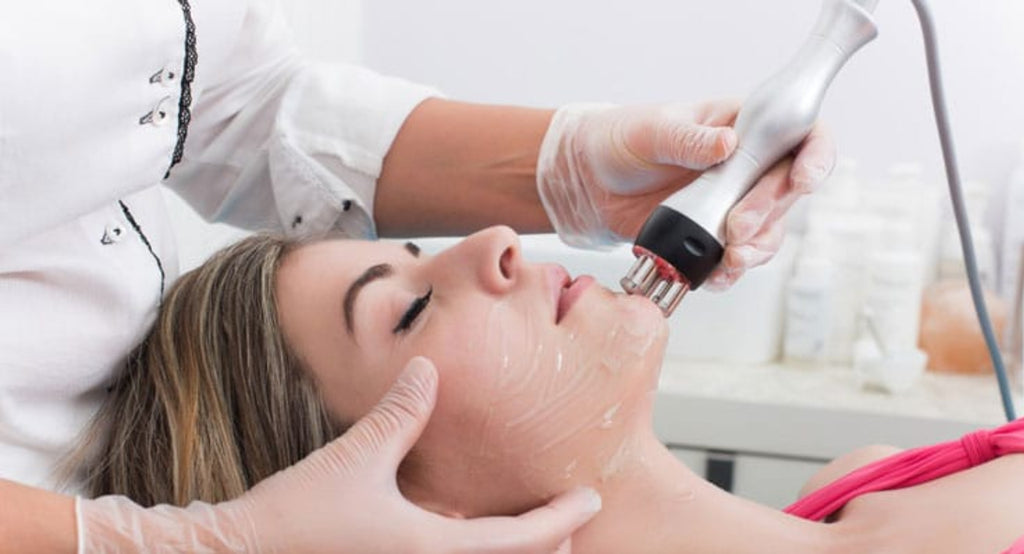
During the treatment, both ablative and nonablative lasers are ready for use. The ablative laser is responsible for breaking down scar tissue. Nonablative laser treatment, on the other hand, improves collagen production to replace the old scar tissue.
Now, laser treatment for ice-pick scars does not completely remove them. Some residual scarring will still be visible after the treatment. The scar will be less visible compared to the ice-pick scar.
Cost: The average cost of ablative therapy is $2000, while that of non-ablative is $1100.
Microneedling
Microneedling involves puncturing the skin to cause collagen production. The procedure is possible from home or at the clinic. Its convenience is making it a popular choice for removing ice-pick scars.
To microneedle, one passes the needle-studded derma roller over the ice-pick scars. The needles will puncture the skin, causing it to start producing more collagen. New collagen will then replace the old collagen, bringing the base of the ice-pick scar higher.
Doctors recommend several microneedling sessions for the best results. With every session, the new collagen will cause the ice-pick scars to fade away. The same effect is seen when microneedling at home. Using a high-quality derma roller, you can easily reduce the appearance of ice-pick scars by microneedling twice daily.
Cost: The price ranges from $20 to $1000+ depending on where you are microneedling and for how long. At-home microneedling is usually cheaper. You can purchase derma rollers from our online store.

Subcision
Ice-pick scars are sometimes tethered to the underlying subcutaneous tissue. Subcision involves breaking the strands that tether the scars to the tissue. By doing so, the base of the ice-pick scars will be higher.
Cost: Each session costs about $400.
Stage 2: Reducing the skin discoloration
The options available in this stage include,
Dermabrasion
It works by removing the epidermis and part of the ice-pick scar. Once removed, there will be newly exposed skin. The new skin is more uniform in color, giving the face an even appearance.
You will need multiple treatments to get the best results out of dermabrasion.
Microneedling
With more microneedling treatments, you will see better results on your skin. The discoloration caused by old collagen forming the ice-pick scars disappears gradually. As the new collagen fibers replace them, the discoloration becomes less distinct, and the skin appears to have an even tone.
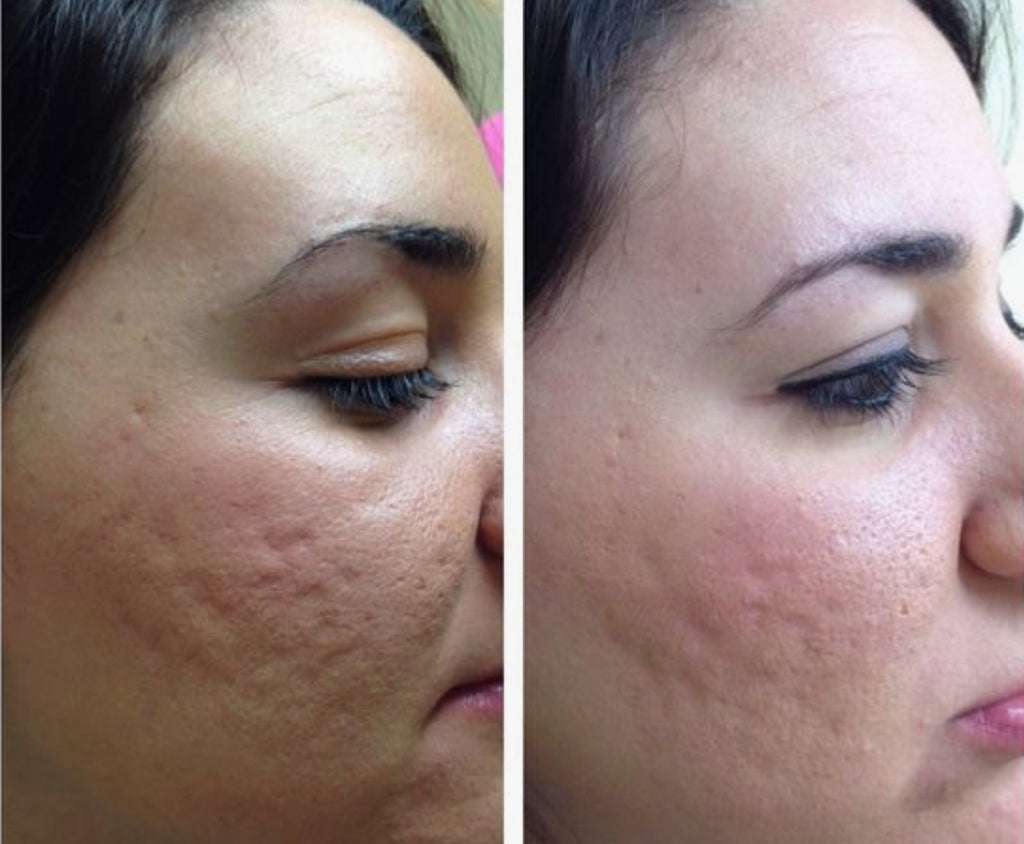
The ice-pick scar before and after microneedling show the effectiveness of the procedure.
Laser Therapy
The two types of laser therapy work to reduce the discoloration of your skin. After the ablative laser resurfaces the ice-pick scars, the non-ablative layer causes the skin to produce collagen. The new collagen fibers give the skin a fresh look that has an even complexion.
Side effects
The therapies above are in various categories based on their invasiveness to the skin. Their level of invasiveness determines their potential side effects.
Non-invasive procedures
These include ice-pick treatment methods such as chemical peels. Their side effects are usually as a result of the chemicals present in the peels. The side effects include,
- Redness of skin: After a medium or deep chemical peel, the healing process will always result in redness of the skin. Depending on your skin sensitivity and type, the redness may last up to 6 months after the treatment.
- Scarring. It rarely occurs; however, when it does, antibiotics will help lessen the appearance of the scars. They usually form on the lower part of the face.
- Changes in skin color. Chemical peels can cause the skin to become darker or lighter than it normally is. In superficial peels, the skin is more likely to get darker while in deeper peels, it is more likely to get lighter.
- Infection. In very rare cases, chemical peels may lead to bacterial infections. They can also make viral infections worse.
- In extreme cases, chemical peels can lead to liver, heart, or kidney damage. The chemicals in these peels, such as phenols, affect these organs after prolonged exposure.
Slightly invasive
Most of the treatments for ice-pick scars, for example, dermabrasion and microneedling, fall in this category. Their side effects include the following,
- Redness of the skin that can last for weeks during the healing phase. A rash may also follow.
- Changes in your skin color.
- Increased sensitivity to the sun, especially after treatment. This is particularly common in microneedling and dermabrasion.
- Blisters and swellings also occur, especially in laser resurfacing; however, they are rare.
- In some cases, people experience severe itching after the procedures.
- Enlarged skin pores that last a short while.
- Loss of freckles.
- Uneven skin in the case of punch grafting. The grafted skin area may end up being slightly higher than the surrounding area.
There are other rare occurrences such as bleeding and allergic reaction to some of the products in use during the treatment.
Safety measures
Most of the side effects are avoidable by taking precautionary measures. These include,
- Avoiding direct exposure to the sun after treatment. It will help prevent any increased redness or irritation from the sun rays.
- Avoid certain cosmetic treatments to prevent any possible reaction during the procedures.
- Taking antiretroviral drugs if you have a history of herpes infection will help prevent viral infections after the procedure.
- Consult your doctor as much as possible before undergoing any of the procedures.
At the clinic, physicians will apply numbing cream before invasive procedures to ease any pain during the treatment. Some physicians will also prescribe drugs to counter any side effects that may arise.
Other treatment options
There are other treatment options such as natural remedies and over the counter drugs; however, these have their limitations.
Why natural remedies will not work
Natural products like honey and witch hazel are not strong enough to treat the deep-lying ice-pick scars. They may only decrease skin discoloration and help with the overall texture of the skin.
Will over the counter (OTC) creams and other topical applications work?
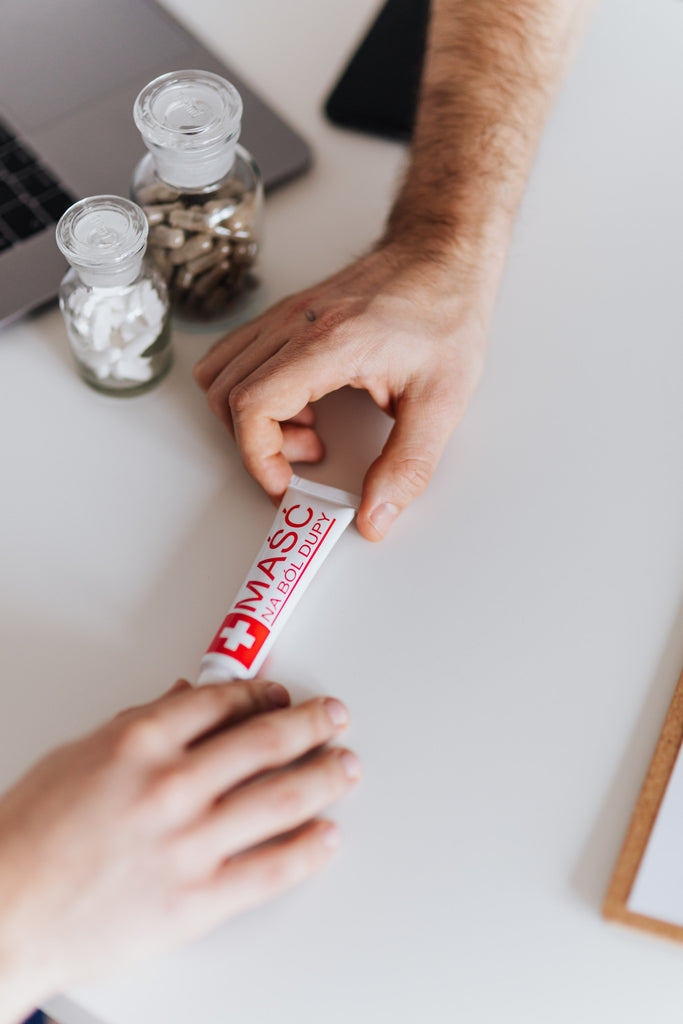
OTC creams are also weak. They should be used as part of a daily skincare routine to keep the skin healthy-looking. One of the advantages of healthy skin is the distraction it causes away from the ice-pick scars. It also helps prevent any future acne outbreak, which prevents future acne scarring.
Takeaway
- Acne ice-pick scars are preventable. We can avoid looking for an ice-pick scars remedy if we only take care of our skin. Where acne is already present, we can follow skincare routines that promote healthy healing of active acne.
- There are many treatment options, even home remedies on how to fix ice-pick scars. Before settling on a treatment, weigh out the pros and cons of each. Work with your doctor throughout the journey to ensure that you find the best treatment for ice-pick scars.
- It takes time to remove ice-pick scars. You may have to undergo multiple treatment sessions or use a derma roller for months before you notice significant changes. The process takes time, but the results are worth waiting for.



Leave a comment